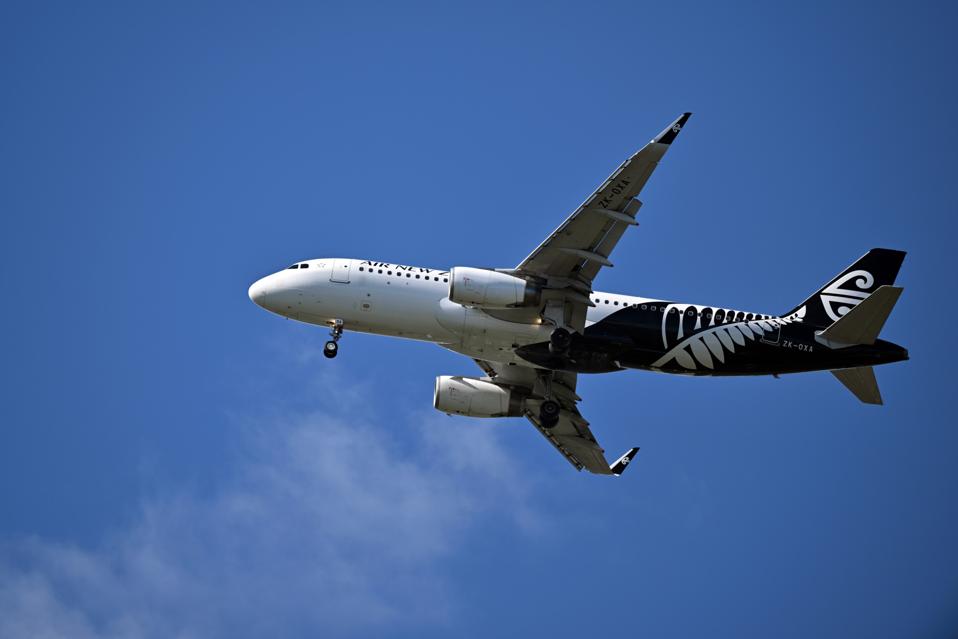Last summer Air New Zealand launched a new in-flight program built almost exclusively around regionally-sourced food and beverage. The dining menu, dubbed ‘A Taste of Aotearoa,’ refers to the Maori name for the far-flung nation. Passengers privileged enough to experience business class service can savor, say, a bold and rich crayfish bisque, or slow-cooked braised venison shoulder, paired with popular pinots from the country’s renowned Central Otago AVA.
You can take the edge off a long haul flight with a neat pour of Vanguard Single Malt from Scapegrace—a craft distillery on the South Island. Sip that next to canapé: Manuka-smoked rye sourdough dabbled in olive oil from Hawke’s Bay and confit potatoes with onion crème fraîche (meant to evoke the obligatory chips and dip combo from many a Kiwi home barbecue). For the main course, sample an intensely mineral-rich chardonnay from The Landing vineyard alongside fresh dill-topped seared snapper.
These elevated flavors are all the provenance of a singular nation. And none of it was alchemized by chance. They were meticulously engineered by professional palates—super-tasters who are well-versed in the way we perceive taste at high altitude. In the case of Air New Zealand, the task is entrusted in the hands (and mouth) of Justin Koen, head of culinary for the 84-year-old airline.
Sampling combinations of great food and wine all day sounds like a pretty awesome gig. And, as he confirms to Forbes, it’s not bad. Nevertheless, as with all dream jobs, it’s still a job. It actually requires an outsized degree of logistical consideration and probably even the preparation of a spreadsheet or two. Overseeing food prep for Air New Zealand, in particular, comes with a unique set of challenges. Because of its relatively remote hub in the middle of the South Pacific, most flights in to, or out of, Auckland on the carrier are long hauls, spending as much as 17 hours in the sky. Advanced planning and some degree of geographic juggling is required to make sure that fresh fare remains fresh, regardless of route.
The good news for Koen—and anyone flying his airline—is that New Zealand holds a rich bounty of ingredients from land and sea. And now it can all be showcased in the air.
We chatted with the tastemaker to find out more about the requirements of the role.
How do you approach recipe development for food that’s served in the sky? What are the main differences to approaching food served at 35,000 feet as opposed to on the ground?
Justin Koen: “Taking reduced taste and aroma at high altitudes into account, Air New Zealand typically tries to ensure that spices are more pronounced during the recipe development process to ensure our inflight meals feature enhanced flavor and texture.”
Once conceived, how is it executed? Where do these meals get assembled?
JK: “From conception to the actual launch of our menu, it typically takes 12 months. We start out by looking at all feedback to refine our initial ideas, and then we test them with real customers until a recipe is perfected. It’s easy to make 10 meals, but getting 1,000 right needs a bit more development.”
How does it change based upon where you’re flying from/to?
JK: “These dishes are carefully crafted to offer a unique culinary experience at 35,000 feet. You can experience our ‘A Taste of Aotearoa’ menu when departing Auckland, however, we do adjust it based on the route to ensure the freshest local and seasonal ingredients are showcased. Based on which of our 14 long-haul destinations you’re flying from, we also adjust the menu to add a little regional flair.”
How do you ensure consistency across a global network? Can you talk about the quality control measures that you take?
JK: “Our meals are first assembled in specialized kitchens and then they undergo a rigorous, quality-control test before they’re loaded onto an aircraft. Air New Zealand has a dedicated quality assurance team at each one of its catering facilities to ensure consistency throughout our global network. Through stringent protocols and regular training, we monitor crew/customer feedback, track waste, and identify trending dishes to discuss at our weekly ‘chef’s table’. There, we assess our performance based on presentation, flavor, seasoning, and cooking methods.We also frequently travel across our catering facilities to host menu presentations and audit each one to ensure they are maintaining the standard we expect.”
What are the most essential considerations for food and wine pairings in the sky? What are some steps that flyers can take to make sure their meals are as flavorful as possible when enjoying them in the sky?
JK: “For the best inflight dining experience, we recommend staying hydrated and choosing meals that are well-seasoned and balanced in flavor. But, we also offer some of the best New Zealand wines onboard that are curated by two wine masters. Our crew is also extensively trained, so they are more than happy to share pairing suggestions that’ll help you achieve the best meal possible.”
What is your personal favorite meal and wine combination on the new menu?
JK: “My personal favorite off of the menu is our spring onion waffles that are topped with poached eggs, hollandaise sauce, bacon, rocket and tomato salsa. It’s our regionally inspired version of an Eggs Benedict, and there is something quite special about eating soft poached eggs in the sky.”
Can you talk about the latest menu? What are some of the highlights and what makes it a unique menu in the sky?
JK: “Our latest menu has an array of highlights, including those that are featured as part of the ‘A Taste of Aotearoa’ menu, where we focus on local and indigenous ingredients from New Zealand. A couple of standouts are our crayfish bisque, which is bold and rich, and our slow-cooked, red wine-braised shoulder of wild venison, which is a perfect comfort dish for cold winter flights.”

